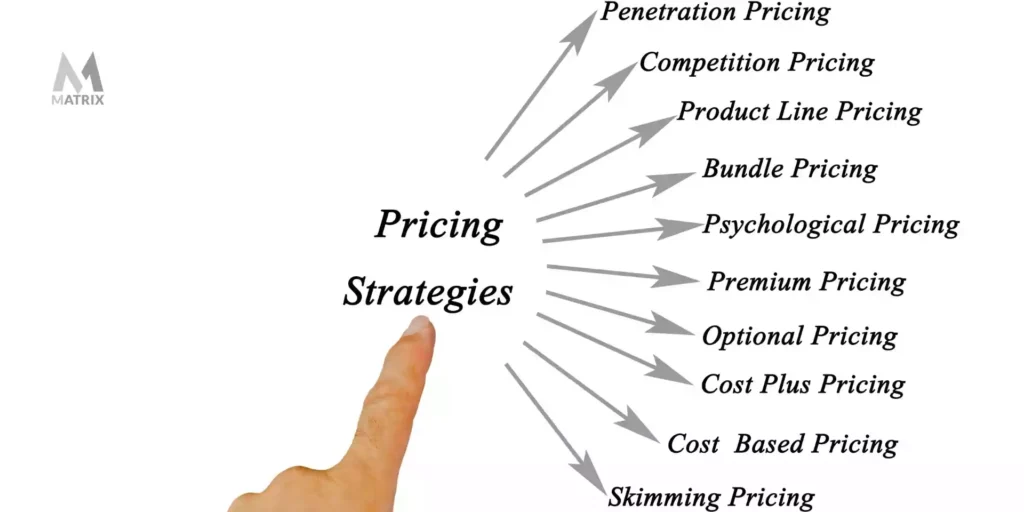
Master Effective Rates Methods to Optimize Revenue
In the ever-evolving landscape of commerce, understanding effective pricing strategies is vital for services intending to optimize profit. A nuanced understanding of prices psychology can considerably influence client actions and getting decisions.
Comprehending Prices Psychology
Recognizing prices psychology is crucial for companies intending to maximize their prices methods. This area checks out how customers perceive costs and how these assumptions influence their getting decisions. Secret concepts in rates psychology consist of the anchoring result, where the initial price presented functions as a recommendation factor for consumers, and the concept of cost level of sensitivity, which differs among different client sectors.
Furthermore, organizations can utilize the concept of viewed worth, where the regarded benefits of a product and services can warrant a higher rate factor. Premium pricing can produce a mood of exclusivity, bring in customers who connect greater costs with premium top quality. On the other hand, emotional prices, such as setting a cost at $9.99 as opposed to $10, can substantially influence consumer habits by making costs show up extra appealing.
Furthermore, deficiency and urgency can boost the regarded value of products, triggering quicker purchasing choices. Comprehending these emotional triggers enables services to develop rates techniques that not only drive sales yet additionally foster customer commitment. Thus, mastering rates psychology is essential for effective prices method formulation, leading to enhanced success and market positioning.
Executing Value-Based Prices

Next off, segment your consumers based on their readiness to pay and the value they view. By doing so, you can tailor offerings and pricing strategies to align with various sectors.
Constantly keep track of market conditions and consumer comments to refine your rates approach over time. By executing value-based pricing, services can enhance profitability while cultivating long-term customer commitment.
Discovering Dynamic Prices Models
In today's quickly changing market landscape, vibrant rates models have emerged as a powerful strategy for organizations seeking to enhance earnings and react to fluctuations sought after. These versions permit business to change their costs in real-time based upon various elements such as client actions, market fads, and inventory levels. By leveraging information analytics and formulas, businesses can recognize optimum rates factors that make best use of sales while remaining affordable.
Dynamic rates can take various types, including time-based pricing, where prices fluctuate based on time of day or season, and demand-based rates, which adjusts prices according to current consumer demand. This versatility not only improves success yet additionally improves consumer complete satisfaction by using rates that reflect real-time market problems.
Executing vibrant prices needs a robust technological infrastructure and a deep click reference understanding of customer segments. It is crucial for organizations to check market signals and customer reactions continually, guaranteeing that rates techniques straighten with more comprehensive service purposes. Moreover, clear communication about prices modifications can aid minimize consumer discontentment and foster count on, inevitably causing continual productivity in a competitive industry. Embracing vibrant prices can therefore be a transformative method in the pursuit for making the most of income.
Studying Rival Prices
Keeping an eye on rival rates is important for organizations aiming to preserve a competitive side in their respective markets. By analyzing other rivals' rates techniques, firms can identify market fads, understand customer choices, and adjust their prices as necessary. This analysis involves gathering information on rivals' costs, advertising approaches, and item offerings to inform prices decisions.
To efficiently examine rival prices, services ought to utilize different tools and methods, such as price monitoring software, market research study reports, and consumer feedback. This information can reveal just how competitors place their services and items, allowing companies to separate their offerings or take on comparable approaches to stay relevant.
In addition, it is crucial to classify rivals into straight and indirect competitors. Straight rivals provide comparable product and services, while indirect competitors may fulfill the very same client requirement with different services. Recognizing the nuances between these teams will certainly enable organizations to tailor their pricing approaches better.
Eventually, recurring competitor rates evaluation is vital for making informed pricing decisions. It enables businesses to stay agile in feedback to market shifts, ensuring they can confiscate chances and minimize risks related to pricing approaches.
Reviewing Prices Efficiency
Understanding exactly how rival prices affects market dynamics leads to an all-natural concentrate on assessing pricing efficiency within one's own organization. This examination is critical for determining locations of toughness and possibilities for improvement, eventually boosting productivity.

Furthermore, conducting normal prices audits can reveal discrepancies between anticipated and actual efficiency. This includes contrasting prices information throughout different segments and channels to understand differences and determine fads. Incorporating customer responses can supply insights into regarded worth versus actual pricing, guaranteeing positioning with market expectations.
Lastly, leveraging information analytics devices can promote deeper insights right into prices efficiency, allowing services to make data-driven changes (Pricing Strategy). By consistently reviewing rates performance, companies can adapt to market changes and enhance their techniques, making sure sustained productivity in a competitive landscape
Final Thought
By leveraging rates psychology, businesses can boost regarded value and tailor pricing to diverse customer sectors. The adoption of value-based and vibrant prices designs helps with real-time modifications based on need and customer readiness to pay.
Understanding rates psychology is vital for organizations aiming to optimize their prices methods. Comprehending these mental triggers allows companies to develop prices methods that not only drive sales however also foster customer commitment. Thus, grasping rates psychology is necessary for reliable prices approach solution, leading to improved productivity and market positioning.
By examining competitors' prices techniques, companies can determine market patterns, understand customer preferences, and adjust their pricing accordingly. By leveraging rates psychology, organizations can boost perceived worth and dressmaker prices to varied customer sectors.